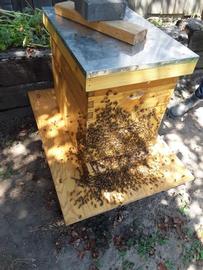 Bees bearding, a sign that they are trying to cool the hive on a warm evening; photo by Dewey M. Caron
Bees bearding, a sign that they are trying to cool the hive on a warm evening; photo by Dewey M. Caron
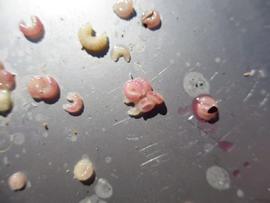 Purple bee larva resulting from poisoning by nectar from Cyrilla racemiflora (an uncommon occurrence); photo courtesy of Bee Informed Partnership
Purple bee larva resulting from poisoning by nectar from Cyrilla racemiflora (an uncommon occurrence); photo courtesy of Bee Informed Partnership
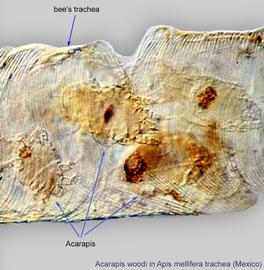 Acarapis woodi in a trachea of the European honey bee, Apis mellifera; photo by Barry OConnor, University of Michigan.
Acarapis woodi in a trachea of the European honey bee, Apis mellifera; photo by Barry OConnor, University of Michigan.
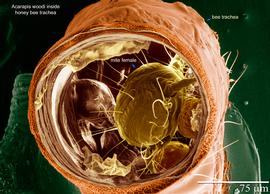 Acarapis woodi female inside honey bee trachea; LT-SEM (digitally colorized) photo by Ron Ochoa and Gary Bauchan, USDA-ARS
Acarapis woodi female inside honey bee trachea; LT-SEM (digitally colorized) photo by Ron Ochoa and Gary Bauchan, USDA-ARS
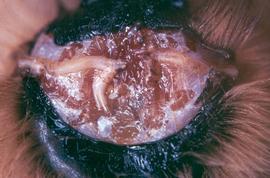 Worker thorax opened to reveal thoracic trachea; right side shows tracheal mite damage; photo by Zachary Huang
Worker thorax opened to reveal thoracic trachea; right side shows tracheal mite damage; photo by Zachary Huang